Recent Articles
Popular Makes
Body Types
2020 Volkswagen Tiguan Road Test and Review
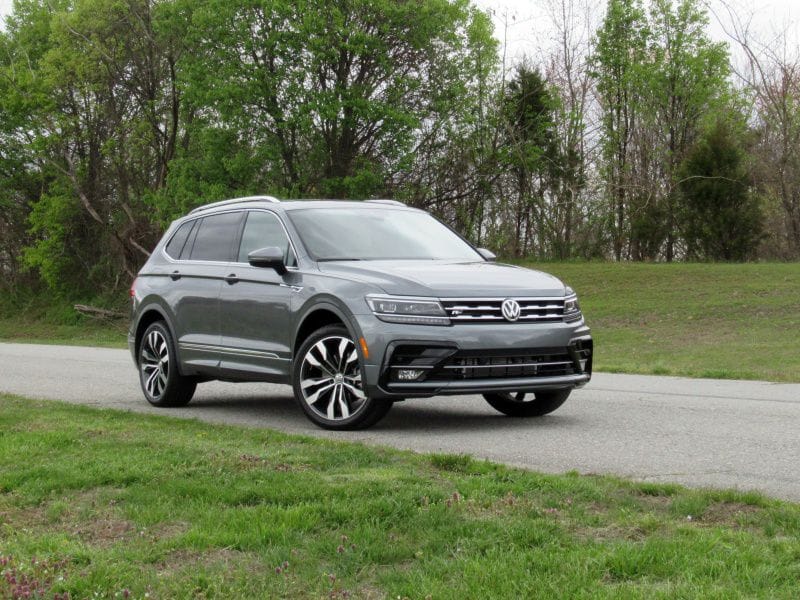
2020 Volkswagen Tiguan SEL R-Line ・ Photo by Brady Holt
The Volkswagen Tiguan first made a name for itself as a distinctly European take on the compact crossover segment. It was smaller, sportier, and typically more expensive than its best-selling American and Japanese competitors.
If you’re still picturing that Tiguan, though, forget about it — Volkswagen completely redesigned the vehicle a couple of years ago, and the changes have turned the Tiguan into the brand’s U.S. best-seller. Today’s Tiguan offers a spacious interior that’s even big enough to squeeze in an available third-row seat, and it provides generous standard equipment even at its base price of $24,945. VW has enhanced that package this year with even more standard and available features. If you’re interested in a European take on the compact crossover, keep reading as we discuss how the Tiguan fits into this highly competitive market segment.
European Style
It’s clear from the first glance that the 2020 Volkswagen Tiguan isn’t like ordinary compact crossovers. The vehicle’s clean, crisp, simple lines stand apart from the extra dazzle that most automakers try to impart. This attractively conservative design will seem tastefully upscale to some buyers yet too dull to others. The Tiguan’s proportions are also unusual — it’s longer yet narrower than its key competitors. That’s because the Tiguan sold in the U.S. is an extended-length version of the Tiguan that’s most popular elsewhere in the world.
The Tiguan’s interior shares the simple austerity of the exterior, with simple shapes and mostly muted colors unless you opt for the part-orange leather upholstery that's available on select models. There’s nothing offensive, and the controls are generally user-friendly. But there aren’t many design flourishes, and some of the cabin’s materials feel downscale. That’s one area where the Tiguan differs from the European expectation; as on many recent Volkswagens, it prioritizes affordability over posh decor. An updated 2022-model Tiguan is expected to go on sale next year with flashier styling and spiffier in-cabin technology.
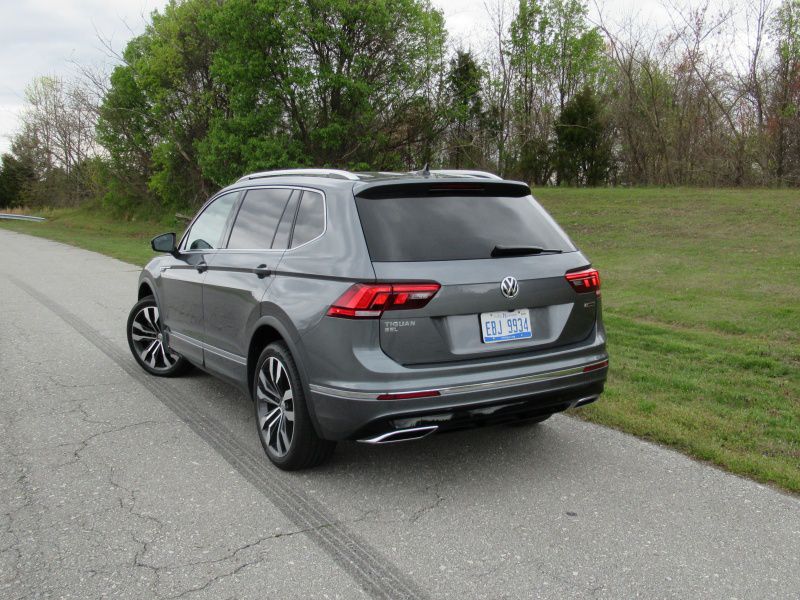
Photo by Brady Holt
All-American Spaciousness
We mentioned that the U.S. gets a longer Tiguan than most of the world — a difference of about 5 inches. Volkswagen puts that extra space to good use, providing stretch-out rear legroom, above-average cargo space, and the available third-row seat (standard on front-wheel-drive Tiguans and optional on all-wheel-drive models). Now, the third row is tiny and meant only for squeezing in extra kids from time to time, but it’s impressive that it exists at all. And using the second row’s fore-aft adjustments, passengers can give themselves stretch-out legroom.
The Tiguan also impresses for cargo capacity. With the standard third-row seat, you get a tiny 12 cubic feet of luggage room with all seating positions in use, but that improves to 33 cubic feet with the third row folded and 66 cubic feet behind the front seats. Skip the third row and you’ll do even better, since you get to put cargo in the area that the folded third-seat would otherwise occupy. With the five-passenger model, Volkswagen quotes 38 cubic feet behind the rear seat and 74 cubic feet with the rear seat folded, both among the best in its class.

Photo by Brady Holt
Composed Ride and Handling
European cars are known for their composed suspensions, and the Tiguan generally meets that expectation. Its firm ride does let you feel bumps in the road — especially with the plus-size 20-inch alloy wheels on our test vehicle — but it recovers quickly. And you don’t feel the car jiggling or floating along on a smooth road.
Even though the Tiguan is one of the biggest and heaviest compact crossovers, it feels small and light on a winding road. The firm suspension keeps the car from pitching around if you take a curve quickly. The steering isn’t so direct that you feel like you’re driving a sporty VW GTI, but it inspires confidence. It’s better than the norm for this class.
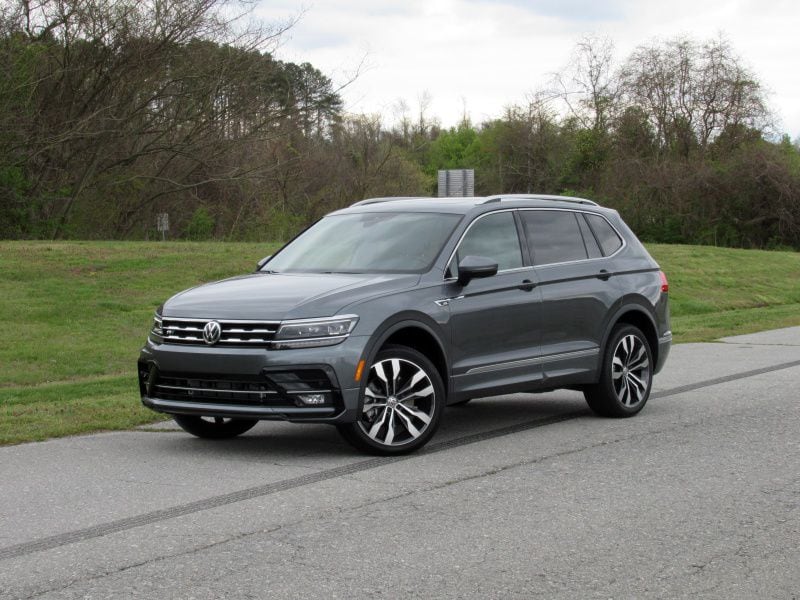
Photo by Brady Holt
Middling Fuel Economy
Every Tiguan uses a turbocharged 2.0-liter four-cylinder that makes 184 horsepower and 221 lb-ft of torque. That latter spec is mighty for the compact crossover class, but don’t expect speed-demon performance as a result. The Tiguan is a heavy vehicle, and that keeps it from accelerating eagerly. Some key competitors aren’t much better, though, and the Volkswagen’s engine is quieter than most. An eight-speed automatic transmission is standard and Volkswagen’s 4Motion all-wheel-drive system is optional.
Fuel economy also suffers due to the Tiguan’s weight. The EPA pegs it at 22 mpg in the city, 29 mpg on the highway, and 25 mpg overall with front-wheel-drive and 2 mpg less with all-wheel-drive. That’s about the same as a mid-size V6-powered Toyota Highlander, and about 5 mpg worse than the best-selling compact crossovers.
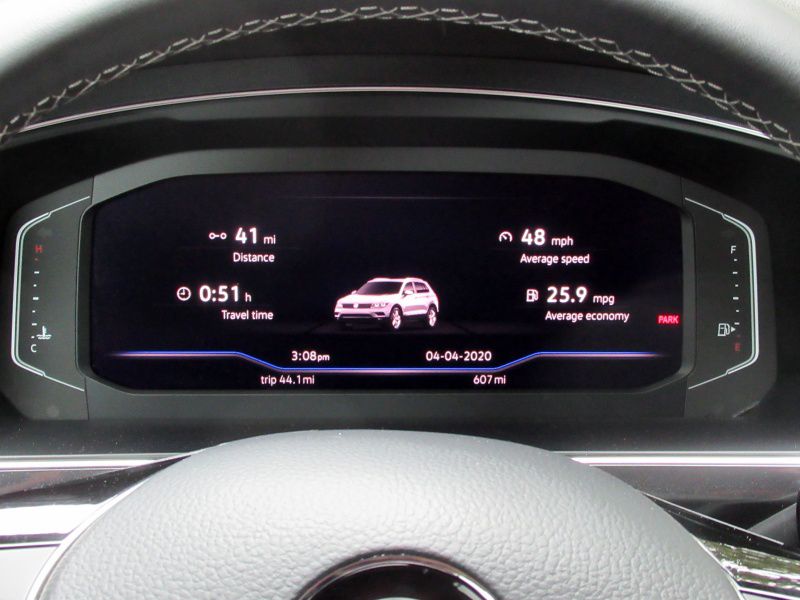
Photo by Brady Holt
Customize Your Drive
To make the most of available performance and make other adjustments to the vehicle’s driving experience, Volkswagen offers a choice of driving modes in the Tiguan. That’s not unusual these days, but the Tiguan goes farther than most.
First of all, you can select your overall driving condition using a knob on the center console, choosing among normal roads, snow, or off-road. You can then put the transmission into its Sport mode, which stays in lower gears longer for superior acceleration or lets you choose your gear manually. You can also use the car’s touchscreen to select Eco, Normal, and Sport driving modes. And to top that all off, you can even build your own Custom driving mode that blends elements of Eco, Normal, and Sport — for example, fuel-saving throttle and transmission behavior but heavier, more responsive steering. You can also customize your off-road settings. While offering Sport and/or Eco modes isn’t unusual, VW goes the extra mile.
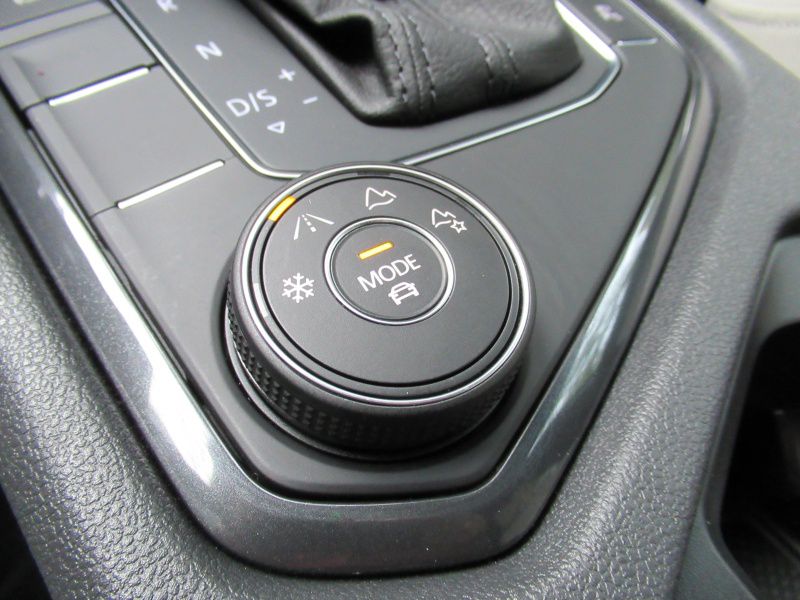
Photo by Brady Holt
Affordable Luxury
The Tiguan is well-equipped even at its affordable base price of $24,945. Even the base S model includes a touchscreen infotainment system (6.5 inches) with Android Auto and Apple CarPlay smartphone integration, alloy wheels (17 inches), in-car Wi-Fi, a six-speaker sound system, and a host of advanced safety features. But it’s the next-up SE level that hits the sweet spot for affordable luxury. At $27,095, it brings heated imitation-leather seats, a power driver’s seat, an 8-inch infotainment screen, keyless entry with push-button starting, and automatic climate control. Unless you’re dedicated to genuine cowhide, that’s several thousand dollars less than a leather-equipped competitor.
However, VW restricts some other features to pricey trim levels. You need the SEL ($32,245) for a power liftgate and driver-assist systems that are standard on several competitors, like adaptive cruise control and a lane-departure warning. And our top-of-the-line SEL Premium R-Line test vehicle, priced near $40,000, is the only way to get genuine leather. A new SE R-Line Black trim brings dressy cosmetic enhancements at a more affordable price ($30,295). All-wheel-drive costs a reasonable $1,300 extra on all but the SEL Premium R-Line, on which it’s standard.
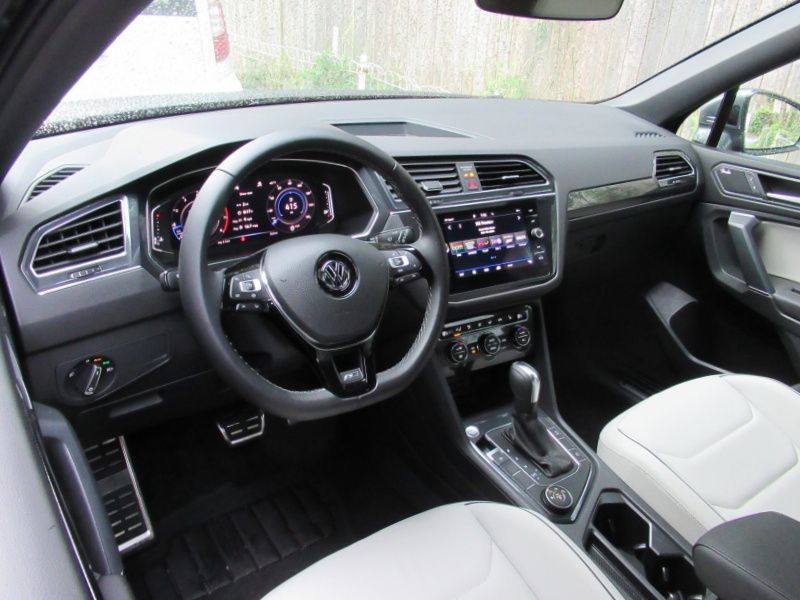
Photo by Brady Holt
More Safety Comes Standard
This year, every Tiguan now comes standard with blind-spot monitoring and a rear cross-traffic alert. It joins the previously standard forward collision warning with automatic emergency braking, helping protect against a collision in any direction. However, as we noted, you need a pricey uplevel trim to get adaptive cruise control or a lane-departure warning with automatic steering corrections. And the top SEL Premium R-Line is the only trim to offer a surround-view parking camera or automatic high beams.
The Tiguan also earned an IIHS Top Safety Pick designation from the Insurance Institute for Highway Safety based on its crash-test performance and accident-avoidance technology, though the National Highway Traffic Safety Administration hasn’t fully evaluated the vehicle.
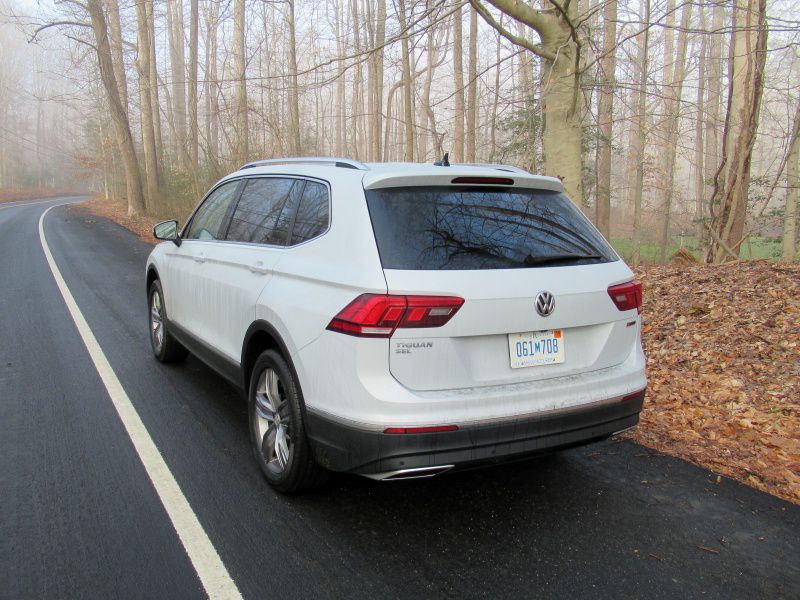
Photo by Brady Holt
Ample Competition
The 2020 Volkswagen Tiguan competes in one of the hottest segments of the automotive market, so it faces many strong competitors. Since it’s a roomier, more upscale model than the class norm, we’ll focus our attention on crossovers with similar priorities. The Honda CR-V is an obvious choice, thanks to its expansive interior, relatively sporty driving manners, and strong overall value. It also boasts far superior gas mileage to the Tiguan. Volkswagen’s aesthetic is very different, though, and the Tiguan has a superior infotainment system.
If luxury is more important to you than spaciousness, the Mazda CX-5 is another compelling compact crossover. It’s elegantly styled, it handles with aplomb, it has an upscale cabin, and, especially with its optional turbocharged engine, it has strong acceleration. The Tiguan has much more space, though. The Chevrolet Equinox and GMC Terrain offer extra-smooth, extra-quiet rides but limit safety technology to pricey trim levels. You might also consider the Tiguan against a luxury-brand crossover thanks to its upscale European aesthetic, though its interior materials and acceleration performance won’t keep up with a BMW or Audi.
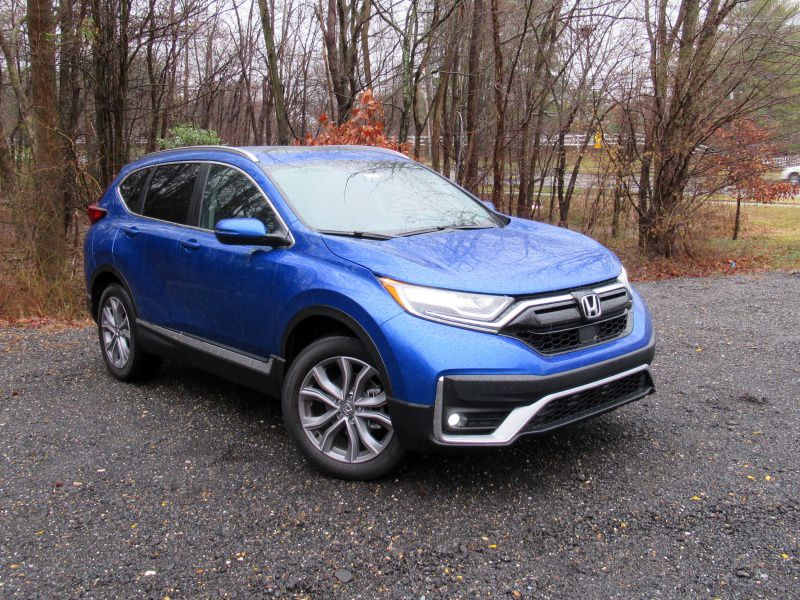
Photo by Brady Holt
Final Thoughts
The 2020 Volkswagen Tiguan is a spacious, agile compact crossover that packs in three rows of seats and lots of features (depending on the ones you want) at reasonable prices. Especially if you like the VW’s conservative exterior and interior styling, it’s a lot of SUV for the money.
Not everything is perfect. The Tiguan’s fuel economy will be enough to knock it from many shopping lists, given how many excellent crossovers get substantially better mileage. But if that’s not your top priority — or you want three rows of seats, which few fuel-sippers offer — the Tiguan is definitely worthy of your consideration.
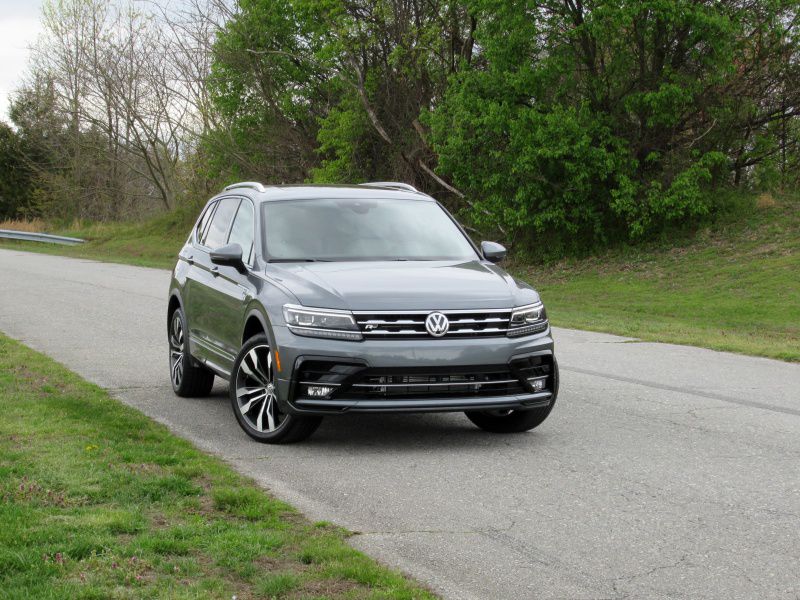
Photo by Brady Holt